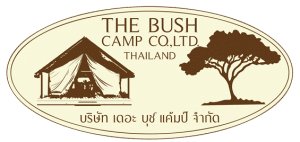Discovering the Karen: Exploring the Rich Culture of Northern Thailand’s Largest Hill Tribe
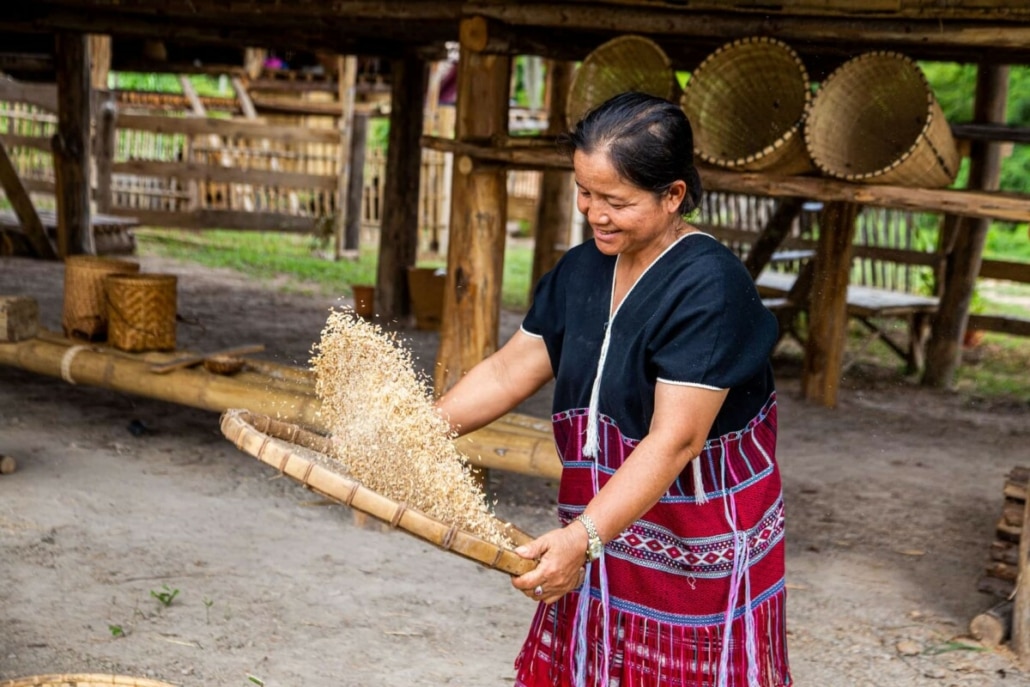
Introduction: Who are the Karen People and Where Do They Live?
The Karen hill tribe people, also known as the Kayin, are an ethnic group that has inhabited the hills and valleys of northern Thailand for centuries. They are one of the largest hill tribe communities in the region, with a population of over 400,000 people. The Karen have a rich cultural heritage, which includes a unique language, traditional dress, and intricate weaving and embroidery skills. They are also renowned for their music, dance, and storytelling traditions, which have been passed down through generations.
The Karen people have a strong sense of community and family, and their villages are typically organized around extended family networks. They have a deep spiritual connection to the land and the natural world, and their animistic beliefs and practices reflect this relationship.
They mainly inhabit the mountainous region of northern Thailand, which is commonly known as the Golden Triangle. This region is located at the convergence of the borders of Thailand, Myanmar, and Laos, and is known for its lush jungles, misty mountains, and stunning vistas.
The Karen people live in small villages scattered throughout this region, with most villages located in remote and hard-to-reach areas. The region is characterized by its rugged terrain and difficult-to-navigate roads, which has made it challenging for the Thai government to provide basic infrastructure such as roads, electricity, and healthcare facilities.
Despite these challenges, the region has become a popular destination for tourists seeking to experience the unique culture and way of life of the Karen hill tribe people. Many visitors are drawn to the region’s scenic beauty, as well as the opportunity to participate in activities such as trekking, rafting, and elephant experiences.
In recent years, efforts have been made to promote sustainable tourism practices and to ensure that the Karen people are able to benefit from tourism in a fair and equitable manner.
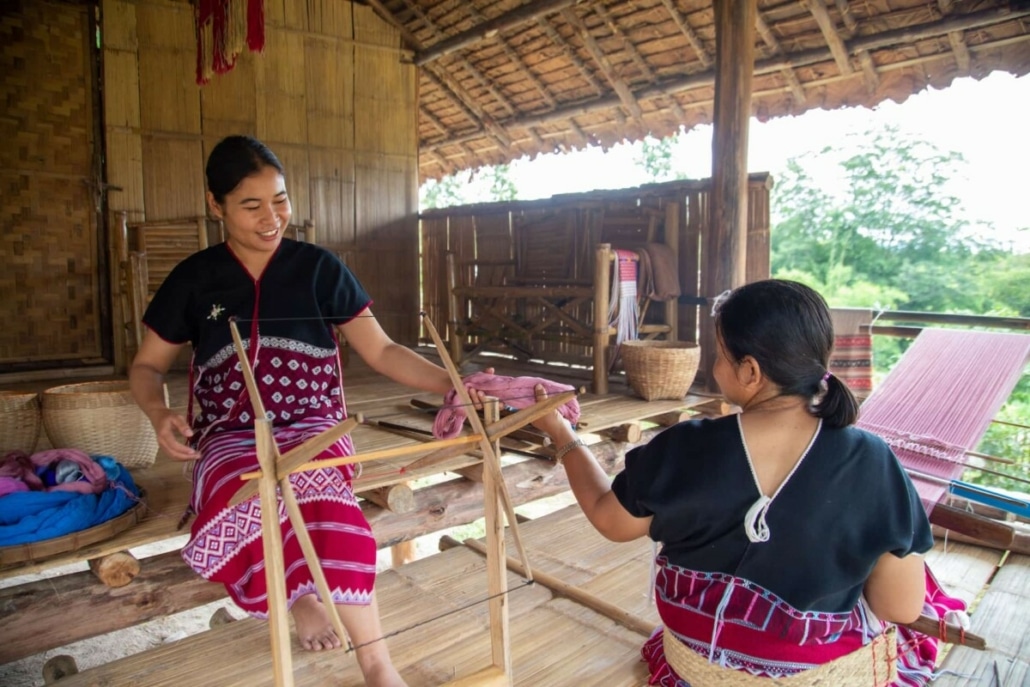
The Rich Textile Traditions of the Karen: From Weaving to Embroidery
One of the most distinctive aspects of Karen culture is their traditional dress, which features brightly coloured, hand-woven fabrics. Women typically wear long, wraparound skirts and embroidered blouses, while men wear loose-fitting shirts and pants made from cotton or other natural fibres.
The Karen are renowned for their weaving and embroidery skills, which are passed down through generations of women. They use traditional looms to weave intricate patterns into their fabrics, which are then decorated with colourful embroidery.
These textiles are an important part of Karen identity and are used for everyday wear and special occasions. In recent years, Karen textiles have gained popularity with tourists and are now sold in markets and shops throughout northern Thailand.
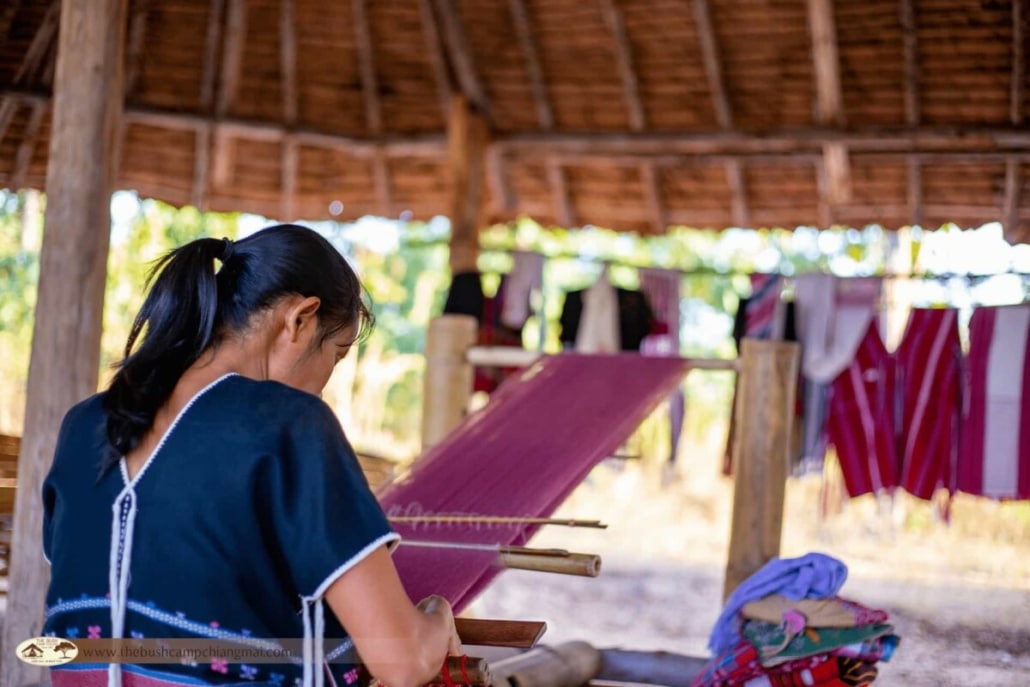
Karen Spiritual Beliefs and Practices: Animism, Buddhism, and Syncretism
The Karen people have a complex spiritual belief system that combines elements of animism, Buddhism, and Christianity. They believe in a spirit world that exists alongside the physical world and that all living things have a spirit or soul.
They also believe in reincarnation and ancestor worship and have a deep respect for the natural world. In addition to their animistic beliefs, the Karen have been influenced by Buddhism and Christianity, which were introduced to the region by European missionaries in the 19th century.
Today, many Karen people practice a syncretic form of religion that combines elements of animism, Buddhism, and Christianity. They often hold ceremonies and festivals that blend these different beliefs and practices.
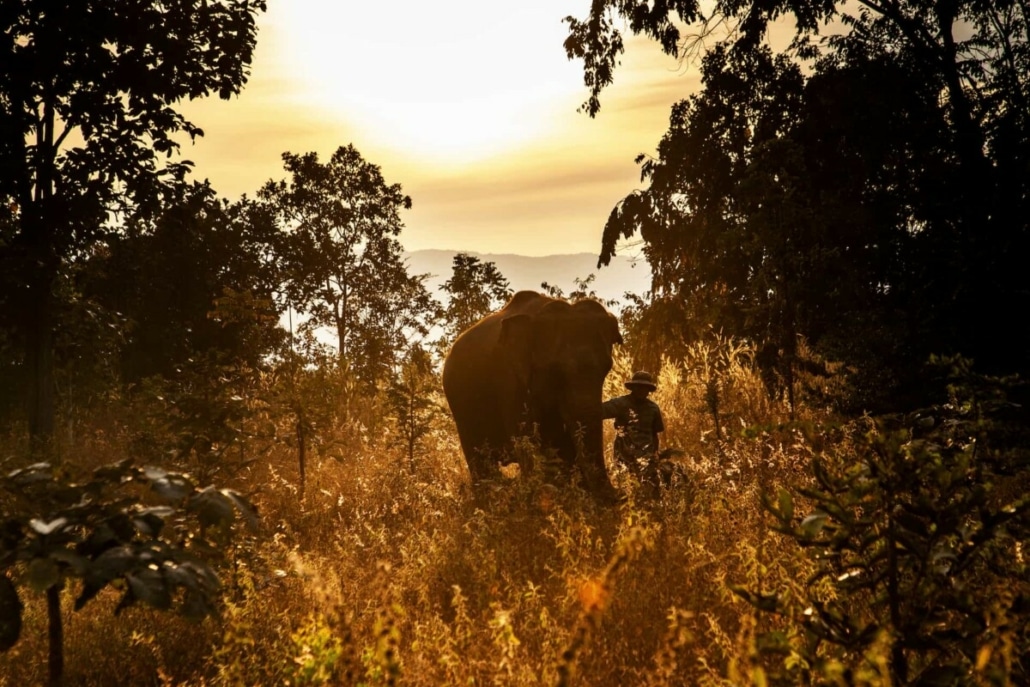
Karen Elephant Culture: Exploring the Relationship between the Hill Tribe People and These Majestic Animals
Elephants have played an important role in the culture and history of the Karen people in Thailand. Historically, elephants were used for transportation, logging, and as beasts of burden. The Karen people were skilled elephant trainers and many were employed as elephant handlers, known as mahouts, in the logging industry.
In addition to cultural events, elephants continue to be used for tourism in Thailand, with many Karen people working as elephant caretakers and guides. However, it’s important to note that it’s important to choose responsible and ethical elephant experiences.
Elephants also play a role in Karen spiritual beliefs, with some Karen people believing that elephants have spiritual powers and are capable of communicating with spirits. In some Karen villages, there are ceremonies and rituals that involve elephants, such as blessing ceremonies for elephants and offerings of food and flowers to elephants as a symbol of respect and gratitude.
Overall, elephants hold a special place in the hearts of the Karen people in Thailand, both as a cultural icon and a source of livelihood.
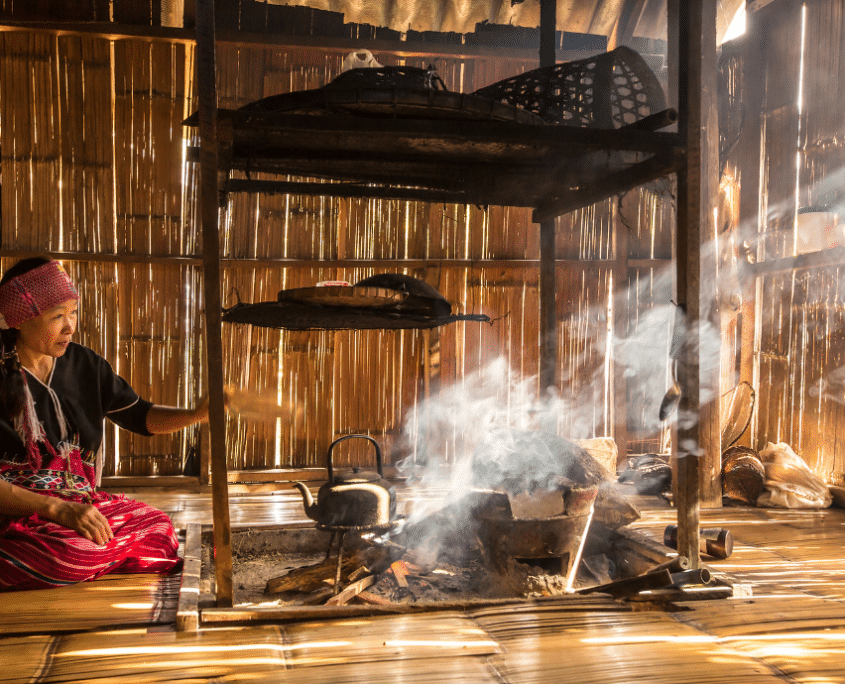
Karen Cuisine: A Journey Through the Flavors and Ingredients of Northern Thailand’s Hill Tribes
Karen cuisine is a delicious and diverse cuisine that reflects the natural resources and cultural traditions of northern Thailand’s hill tribes. It features a variety of fresh herbs, vegetables, and meats, including pork, chicken, and fish. One of the most famous dishes in Karen cuisine is Kaeng Hang Le, a flavorful pork curry that is made with a blend of herbs and spices, including ginger, garlic, and turmeric.
Other popular dishes include Kai Soi, a noodle soup that is made with chicken or pork and served with crispy noodles and pickled mustard greens. Karen cuisine also features a range of sticky rice dishes, including Khao Lam, a sweet and savoury dish made with sticky rice, coconut milk, and pork. Visitors to northern Thailand can experience the flavours of Karen cuisine at local markets and restaurants throughout the region.
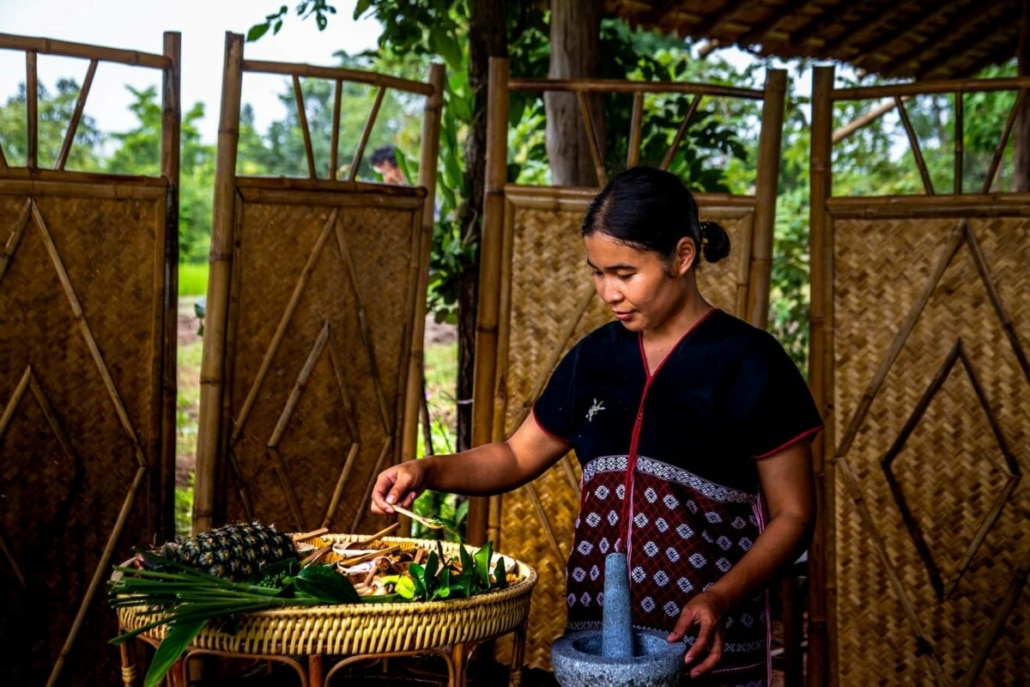
Karen Music, Dance, and Storytelling: A Vibrant and Unique Cultural Heritage
The Karen people have a rich tradition of music, dance, and storytelling that has been passed down through generations. They use music and dance to celebrate their traditions, tell stories, and mark important occasions, such as weddings and funerals.
Karen music is characterized by its use of bamboo instruments, such as the khene and the shan, and features intricate melodies and rhythms. Karen dance is often performed in traditional dress and is accompanied by live music. The dances feature intricate footwork and hand movements and often tell stories or depict scenes from everyday life.
Storytelling is also an important part of Karen culture, and traditional tales are passed down through oral tradition. These stories often teach important moral lessons and are a way of preserving the history and heritage of the Karen people. Today, visitors to northern Thailand can experience Karen music, dance, and storytelling at cultural festivals and events throughout the region.
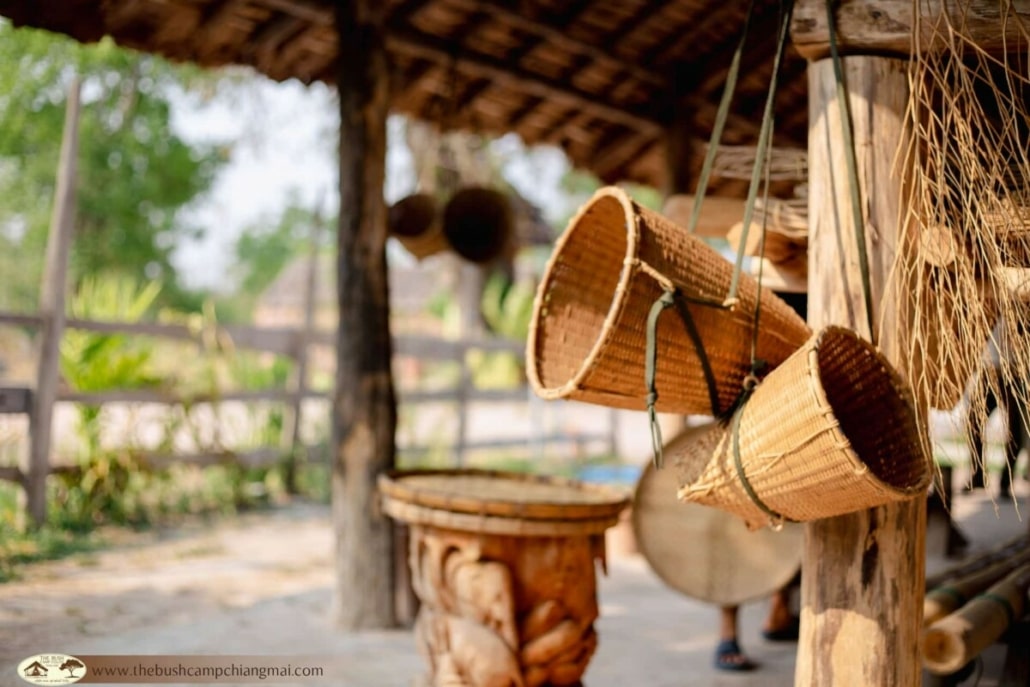
Karen Festivals and Celebrations: An Insight into the Hill Tribe’s Colorful Traditions
The Karen people celebrate various festivals and events throughout the year that reflect their cultural and spiritual beliefs. These festivals are marked by vibrant colours, traditional music, dance performances, and ceremonies. One of the most significant festivals celebrated by the Karen people is the Karen New Year, which usually falls in the month of December or January. During this festival, people dress up in traditional Karen attire, and there are traditional dance performances, music, and games. Karen New Year is a time for family reunions, where people come from different parts of the country to celebrate together.
Another important festival celebrated by the Karen people is the Poi Sang Long Festival, which is a rite of passage for young boys to become novice monks. This festival is a beautiful and colourful event, with boys dressed in elaborate costumes and makeup. The Poi Sang Long Festival is held annually in the northern Thai province of Mae Hong Son, and it is a three-day event that involves music, dance, and various ceremonies.
Other festivals celebrated by the Karen people include the Elephant Festival and the Spirit Worship Festival. The Elephant Festival is a celebration of the Karen’s connection to nature and their reverence for elephants. The Spirit Worship Festival, on the other hand, is a time for Karen people to pay homage to their ancestors and the spirits that watch over them.
These festivals and celebrations provide a glimpse into the Karen people’s cultural traditions and beliefs. They are a time for people to come together, celebrate their heritage, and pass on their customs to the younger generations. Through their festivals and celebrations, the Karen people continue to keep their culture alive and vibrant, and they are an essential part of Thailand’s diverse cultural tapestry.
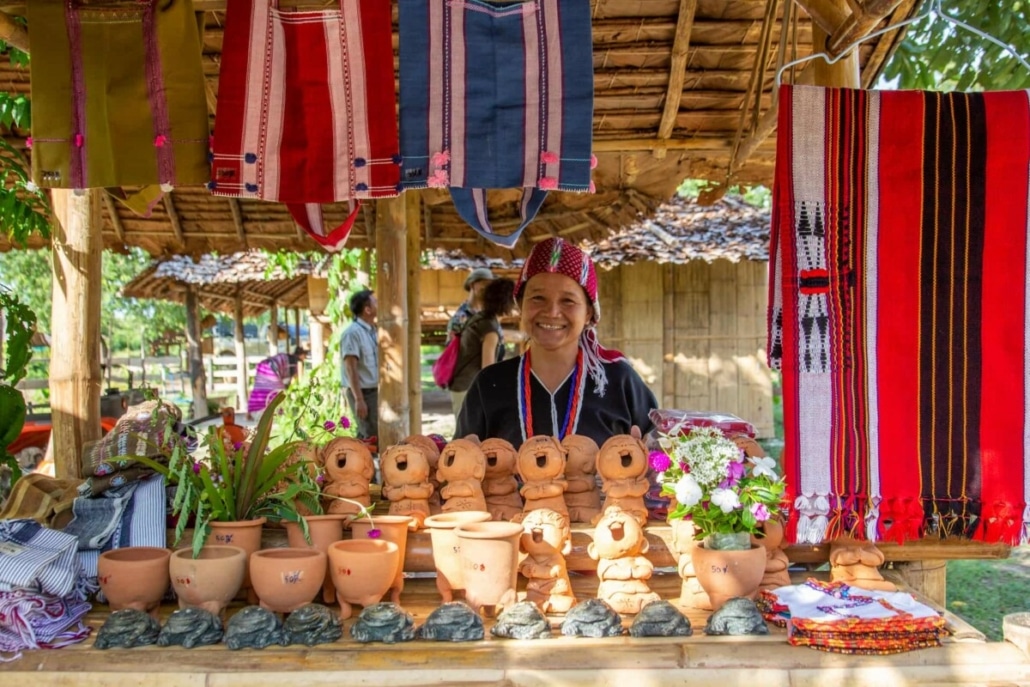
The Karen and Tourism: Preserving Culture and Balancing Economic Opportunities
Tourism has brought both opportunities and challenges to the Karen people. On the one hand, it has provided an economic lifeline to many Karen villages, with visitors eager to experience the culture, cuisine, and crafts of the hill tribes. However, tourism has also put pressure on Karen communities to commercialize their culture, often at the expense of their traditions and values.
Some Karen communities have sought to balance economic opportunities with the need to preserve their cultural heritage by developing sustainable tourism practices, such as homestays and community-based tourism initiatives. These initiatives enable visitors to experience Karen culture firsthand while also supporting local communities and preserving their way of life.
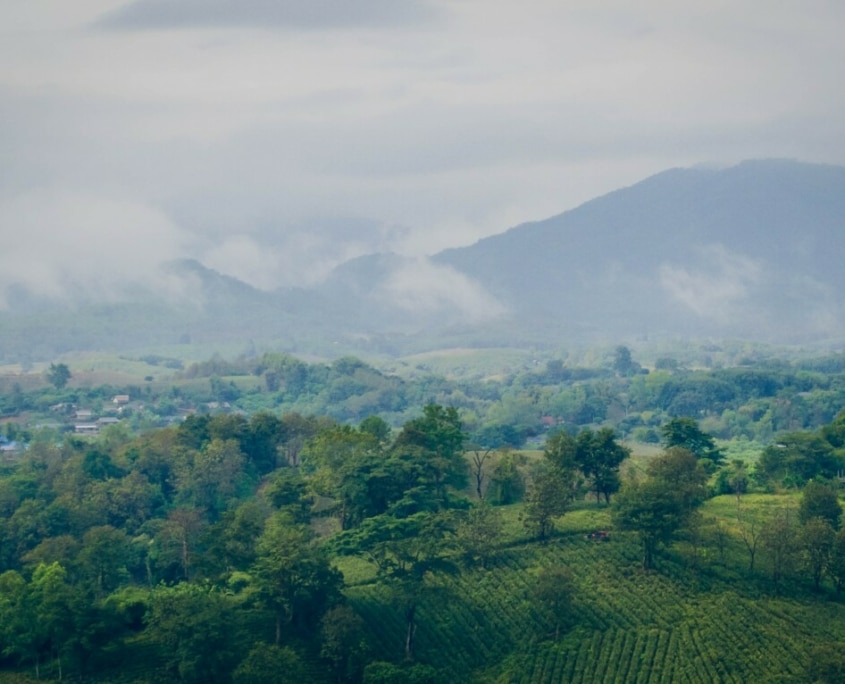
Challenges Facing the Karen People: Land Rights, Development, and Cultural Preservation
The Karen people face a number of challenges in the modern world. One of the most pressing is the struggle for land rights. Historically, Karen communities have lived off the land, practising shifting cultivation and using natural resources sustainably. However, in recent decades, the Thai government has sought to develop the region, often at the expense of Karen land rights.
Many Karen communities have been displaced from their traditional lands, leading to social, economic, and environmental impacts. In addition to land rights, the Karen also face challenges in preserving their cultural heritage in the face of modernisation and globalisation. The loss of traditional knowledge, cultural practices, and language is a significant concern for many Karen communities.
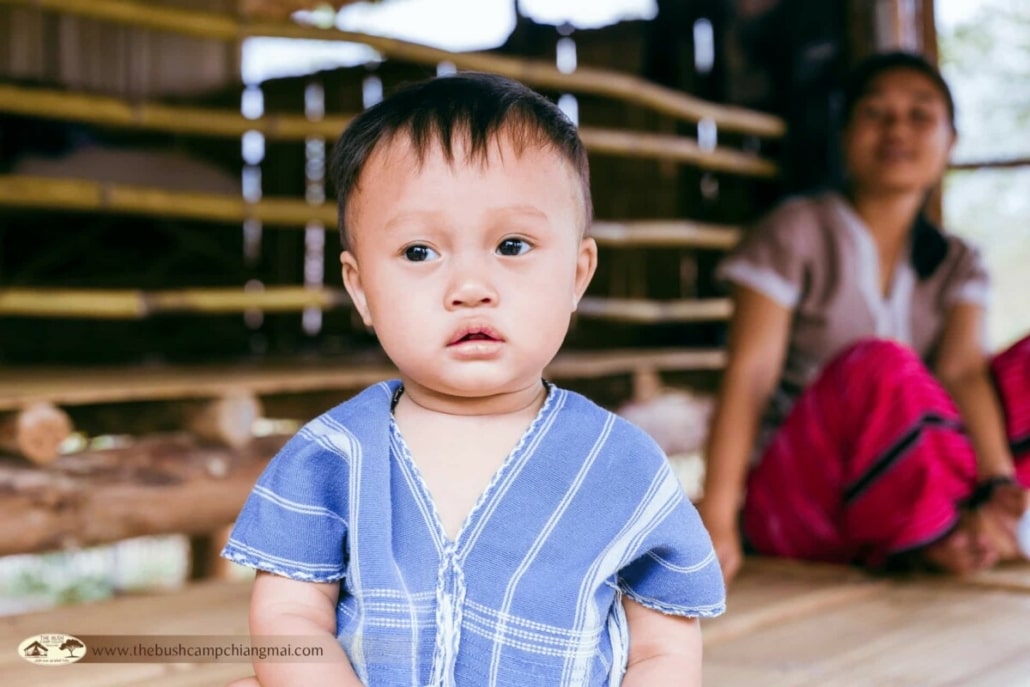
The Future of the Karen People: Resilience and Hope for the Next Generation
Despite the challenges they face, the Karen people remain a resilient and vibrant community. They have a deep connection to their cultural heritage and are working to preserve their traditions and way of life for future generations. Many Karen youth are taking an active role in this effort, working to revitalise their language, culture, and music. They are also using social media and other digital tools to connect with other Karen communities around the world and raise awareness about their struggles and aspirations. As they look to the future, the Karen people are committed to building a sustainable and just society that respects their traditions and values while embracing the opportunities of the modern world.
BOOK A TOUR IN CHIANG MAI NOW >>
You might also like:
FAQs about Karen hill tribe people:
Who are the Karen people?
The Karen people are an ethnic minority group that primarily lives in the hills and mountains of Thailand, Myanmar, and neighbouring countries in Southeast Asia.
What is Karen traditional clothing like?
Karen traditional clothing is known for its vibrant colours and intricate patterns. Women typically wear long skirts and blouses made from handwoven fabric, while men wear shirts and trousers.
What kind of food do the Karen people eat?
The Karen people have a unique cuisine that includes dishes made from locally sourced ingredients, such as sticky rice, vegetables, and herbs. Popular dishes include khaub poob (a soup made with pork ribs and pumpkin) and kaeng hang le (a spicy pork curry).
What is Karen music like?
Karen music is known for its lively rhythms and use of traditional instruments, such as the saung gauk (a harp-like instrument) and the kye waing (a percussion instrument made from bamboo).
What are some of the challenges facing the Karen people?
The Karen people have faced many challenges over the years, including displacement from their traditional lands, political persecution, and discrimination. Despite these challenges, they have continued to work towards cultural preservation and community empowerment.
